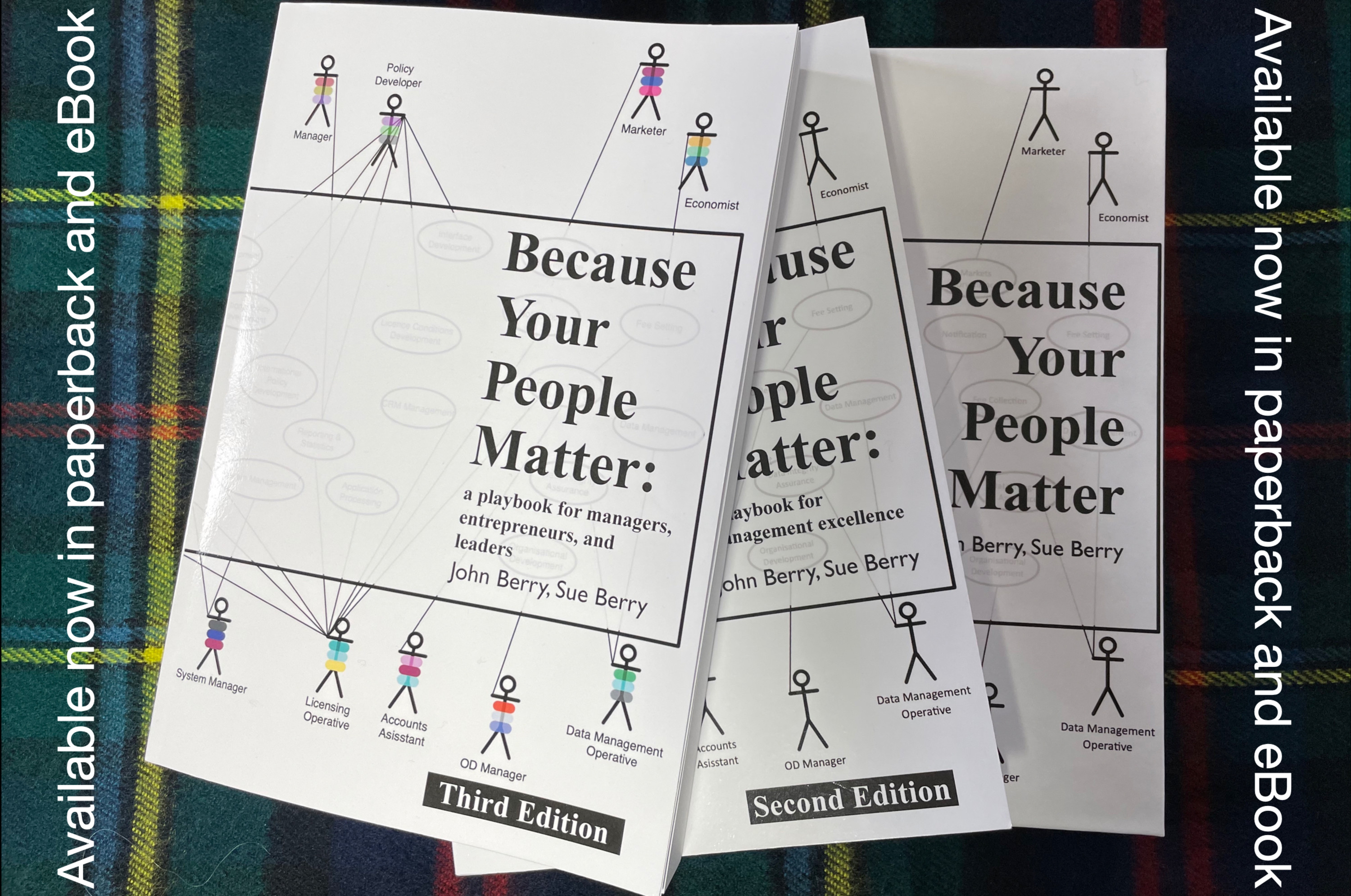One of several papers on recruitment and selection
Recruit like a punter: rationalise
Written by John Berry on 6th March 2018. Revised 24th April 2023.
6 min read
 There are three approaches that humans take to make decisions - automatic, neuralistic and rational. Only one has any place in recruitment and selection.
There are three approaches that humans take to make decisions - automatic, neuralistic and rational. Only one has any place in recruitment and selection.
This blog has parallels with an excellent summary of gut-feel decision-making by Emma Beddington in The Guardian. She cites a brilliantly titled article by Tomas Chamorro-Premuzic, an organisational psychologist, Why Do So Many Incompetent Men Become Leaders?. The answer is in large part because egotistical incompetent men get into positions of seniority by winging it, and then hire others of their type.
Do read those excellent side articles. For now, here's why neither gut feel nor neuralistic decision-making have any place in personnel selection.
Automatic decision-making
Over 100,000 years of programming has developed a lightning-fast decision system driven by the human need to survive. The processing centre is located deep in the oldest part of the human brain. We sense something and react. We pump chemicals to muscles and in a flash, we're off. It's fight or flight. It's automatic.
Whilst our automatic decision system is useful when we're threatened, it has little place in a manager's life - and certainly no place in helping make decision around who to hire!
Neuralistic decision-making
Consider an incident commander in the fire brigade. They must make decisions faster than the spreading fire. What's decided must be workable and generally in a positive direction towards the goal of putting the fire out while controlling the risks.
A further decision can be made later as situational awareness grows, so there's no need to get decisions 100% right.
 This type of command decision-making is a development of our automatic system. It represents a move from the old brain that makes those 'gut-feel' automatic decisions to the new brain, or neocortex, that makes decisions based on reasoning, experience and training. It represents evolution from primitive man to modern man. It's neuralistic decision-making.
This type of command decision-making is a development of our automatic system. It represents a move from the old brain that makes those 'gut-feel' automatic decisions to the new brain, or neocortex, that makes decisions based on reasoning, experience and training. It represents evolution from primitive man to modern man. It's neuralistic decision-making.
Neuralistic decision-making suits environments where there's little time, a high level of risk, a complex situation and poor information. Such environments, like a battlefield or a fire-ground, spawned many decision-making techniques taught to managers in those domains.
One such neuralistic technique is recognition-primed decision-making (RPD). Using RPD the manager relies on their extensive experience of many similar situations to match the present scenario with a personal solution repertoire.
Rational decision-making
Since it's based on previous experience, neuralistic decision-making is a step up from automatic, gut feel. Neuralistic methods are appropriate under fast tempo scenarios. But neuralistic methods are not right when managers are to make decisions about which candidate to select when recruiting.
In recruitment we need slower rational decision-making. There's no urgency. The decision needs to be right first time.
In selection decision-making, the hiring manager is trying to predict which of the candidates before them will perform best when in the role. In selection decision-making the hiring manager must rationally evaluate all evidence. So, what process should managers use when making such predictions?
Lessons from the races
 Imagine you're at the races, about to place a bet. You have only enough money for one bet but there's plenty of time before the race so you've time to get it right. No-on dies if you get it wrong - you just lose a heap of cash. It's the same scenario when making a hiring decision. So, what do you do?
Imagine you're at the races, about to place a bet. You have only enough money for one bet but there's plenty of time before the race so you've time to get it right. No-on dies if you get it wrong - you just lose a heap of cash. It's the same scenario when making a hiring decision. So, what do you do?
If you were a kid, you'd likely look at the names of the horses and chose one you like the sound of, or has the same name as your mum, or is named after the town where you live. Liking a horse says nothing about whether or not it will win. Similarly, liking a candidate says nothing about whether or not they'll perform in a job.
Punters - those frequenting race meetings and making a living from betting - need solid information on which to make their prediction. They're no fools - if they were they'd be broke. They learn the game. They know the form of all the horses, they know the jockeys. And they go down to the enclosure to see the horses parade before the race. They gather evidence. They'll have criteria - like the horse's stamina, previous trials, breeding and previous form.
Matching with criteria
Selection decisions need evidence of a match between candidate attributes and defined criteria on which to base the prediction about whether the candidate will perform.
 Unfortunately, many managers behave more like an incident commander - they base decisions on experience. They use neuralistic decision-making.
Unfortunately, many managers behave more like an incident commander - they base decisions on experience. They use neuralistic decision-making.
But hiring managers are seldom expert in hiring.
For recognition-primed decision-making the hiring manager would need to have experienced thousands of both successful and unsuccessful candidates in thousands of different jobs. Few hiring managers have interviewed, considered and appointed more than a few tens of candidates for one or two jobs.
Neuralistic, experience-based, decision-making has no place in selection decisions.
Take more time - be rational
In selection decisions, the more high-quality information the hiring manager can get on each candidate the better. And if they elect that they have insufficient data on which to make their prediction, they have time to ask for more. Decision making can then move to rational analysis of candidate evidence against defined criteria.
Rational decision-making starts by defining the decision criteria. The hiring manager must know the job to be done and what specific human characteristics will enable a jobholder to excel once in the job.
Fit with criteria
Rational decision-making continues by demanding presentation of evidence illustrating the fit between the criteria and the personal characteristics of each candidate. Typically, only those meeting the criteria should be considered. Like the risk of losing a big bet at the races, there's too much resting on hiring decisions to compromise.
 The decision then makes use of this evidence, predicting varying degrees of excellence, balancing one criterion against another until the best candidate emerges.
The decision then makes use of this evidence, predicting varying degrees of excellence, balancing one criterion against another until the best candidate emerges.
And that evidence comes from assessment of each candidate in the five core human characteristics - intelligence, personality, preferences, competencies and behaviours.
Test and evaluate
So, the hiring manager needs evidence in each of those five characteristics, evaluated against job-specific criteria. This evidence comes from testing and structured interviewing.
If you're a hiring manager, be like a punter - gather evidence to support your bet. And if you'd like more on how, call us.